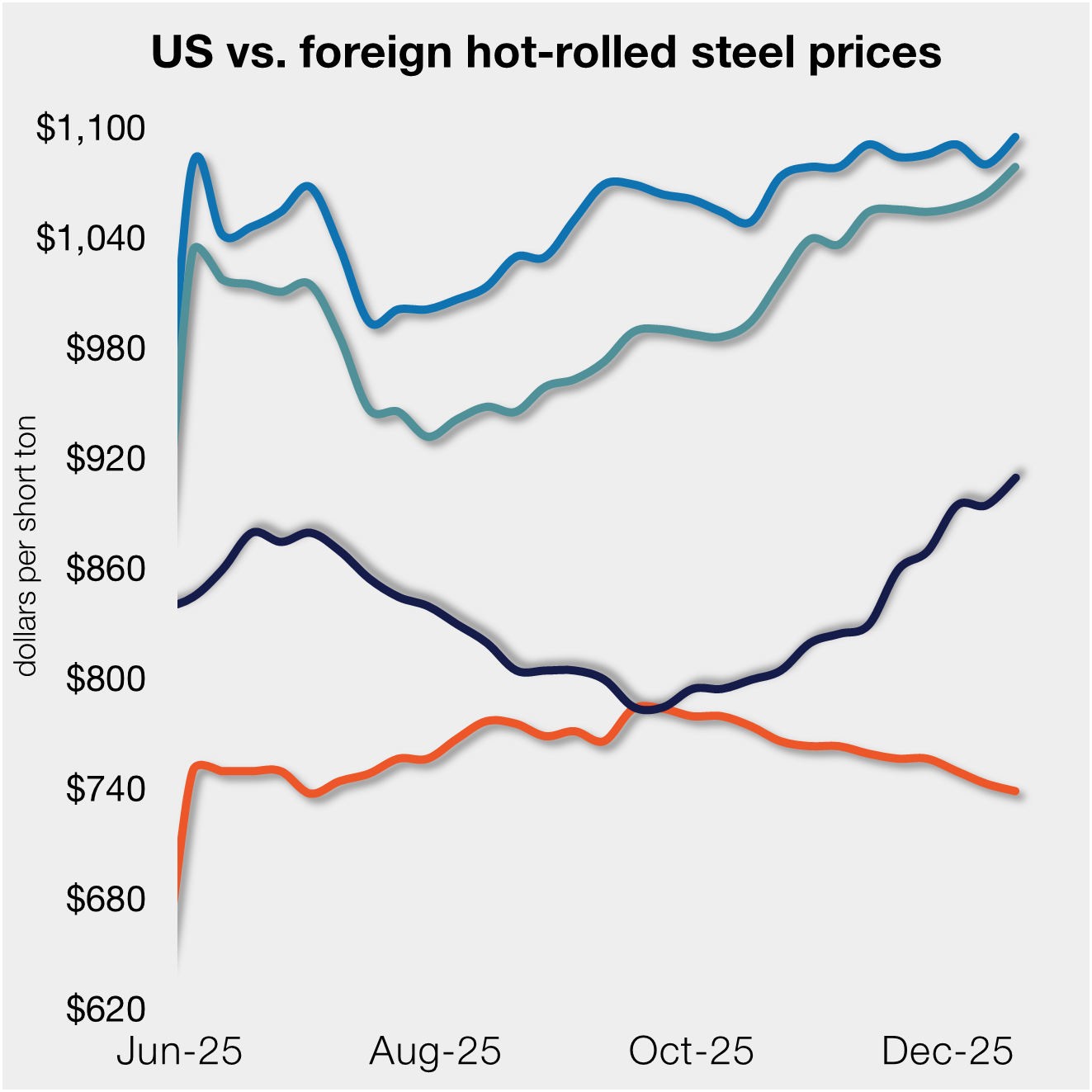Prices

October 19, 2014
Line Pipe Dumping Filed Against Turkey & South Korea
Written by Peter Brebach
US pipe producers filed dumping and countervailing duty petitions on Line Pipe against producers in Korea and Turkey, alleging dumping margins of 16 percent against Turkey and from 58 percent to 221 percent against Korea (the alleged CVD margins are not known or not published at this time).
This comes relatively shortly after the trade case on OCTG was completed, mostly successfully. For the better understanding of those not active in the pipe business, OCTG are used vertically (down-hole), while Line Pipe is used horizontally. Another difference is that the vast majority of line pipe is “welded,” while a good portion of OCTG is “seamless.” That also means that practically all the raw material for line pipe is hot rolled coil, while some for OCTG is not (seamless pipe requires round billets).
![]() There is a certain amount of overlap between these two products, i.e. mills that produce one can usually produce the other. However, OCTG are a bit more demanding and thus more difficult to produce than line pipe.
There is a certain amount of overlap between these two products, i.e. mills that produce one can usually produce the other. However, OCTG are a bit more demanding and thus more difficult to produce than line pipe.
Line Pipe is generally used for the conveyance of oil and gas, and the recent shale drilling boom in new fields, like the Bakken in North Dakato, the Eagle Ford in Texas and the Marcellus in Pennsylvania, has increased the domestic production in these areas without a lot of line pipe infrastructure. And while one can transport oil by rail or truck, if necessary, that is not possible with gas. The result is that the demand for line pipe in the US has increased substantially. However, to the detriment of the US producers, the market share of imports has continued to go up, preventing the local mills from enjoying this windfall.
The domestic market is somewhere between 3 and 4 million tons annually, and imports have enjoyed a share of over 50 percent for some time. However, the mills that were hit with OCTG margins, and thus precluded from OCTG exports to the US, are expected to shift some of those lost volumes into line pipe.
So, while such a suit on line pipe has had merits from a volume standpoint for some time, it is now also used to prevent such a shift from happening. As an example, imports of line pipe from Korea in 2012 increased by approximately 50 percent from 2011, to over 1.8 million tons.
In order to be successful with such trade cases, the petitioners not only have to prove dumping (and subsidies enjoyed by the foreign producers), but also injury to the domestic industry. The schedule for this is that the Department of Commerce DoC) first decides whether or not to accept the suit (and let me tell you they have never seen a suit they did not like). Next, the International Trade Commission ITC) decides preliminarily on the question of injury.
If they don’t think it exists, the suit gets thrown out. If their decision says there is a chance of injury (which is what happens most of the time), the suits continue, and the DoC works on the dumping and countervailing duty margins, which they publish on a preliminary basis a few months later. A lot of maneuvering from both sides happens after that until the DoC publishes their final dumping and countervailing margins, and, as we just saw in the OCTG cases, there can be HUGE changes. The last step is for the ITC to make a final determination on the injury question.
I have seen more dumping suits in my career than I care to remember, but I have never seen this much “fluff” in a petition – stuff that makes me wonder about the purpose of including it, which raises the question whether the suit is short on substance. I am also a bit surprised that only two countries are involved (there were nine in the OCTG suit).
There is also at least one incorrect statement in the suit, which alleges that the size range of 4.5 to 10.3/4″ OD does not represent a substantial portion of the overall market. That is not correct.
Last, I feel compelled to point out that a substantial percentage of the petitioners (and of the interested parties mentioned – US mills who are capable of producing line pipe but are not believed to be doing it right now) are foreign-owned. These foreign owners are Canadian, Indian, Japanese, Mexican, Russian and Turkish. In addition the owners of Maverick are foreign-owned as well (Italian/Argentine and/or Luxemburg). In an interesting twist, the Turkish producer Borusan/Mannesmann finds itself on both sides of this suit, as a petitioner and a defendant.
What are the chances for this suit to be successful, from the standpoint of the petitioners? This is always very difficult to predict. I am expecting the DoC to confirm the margins alleged, or at least close to it, which leaves the injury question. Looking at the import market share and the volume increases in recent years leads me to believe that the ITC will find in favor of the petitioners.
Written by: Peter Brebach, CEO of Iron Angels of Colorado






